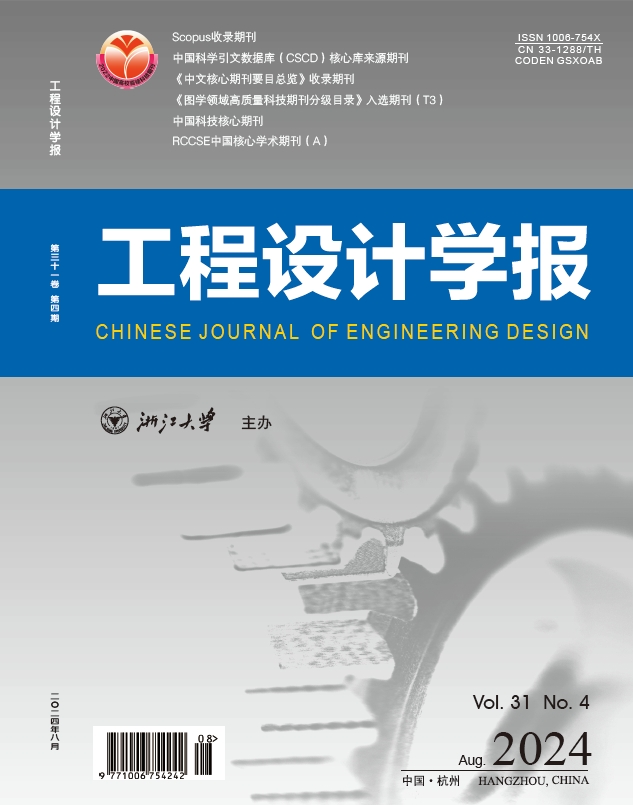Optimization of Collocated/Noncollocated Sensors and Actuators along with Feedback Gain Using Hybrid Multiobjective Genetic Algorithm-Artificial Neural Network
Q4 Engineering
引用次数: 9
Abstract
A multiobjective optimization procedure is proposed to deal with the optimal number and locations of collocated/noncollocated sensors and actuators and determination of LQR controller gain simultaneously using hybrid multiobjective genetic algorithm-artificial neural network (GA-ANN). Multiobjective optimization problem has been formulated using trade-off objective functions ensuring good observability/controllability of the structure while minimizing the spillover effect and maximizing closed loop average damping ratio. Artificial neural networks (ANNs) are used to train the input as varying numbers and placements of sensors and actuators and the outputs are taken as the three objective functions (i.e., controllability, observability, and closed loop average damping ratio), thus forming three ANN models. The trained mathematical models of ANN are fed into the multiobjective GA. The hybrid multiobjective GA-ANN maintains the trade-off among the three objective functions. The ANN3 model is used experimentally to provide the control inputs to the piezoactuators. It is shown that the proposed method is effective in ascertaining the optimal number and placement of actuators and sensors with consideration of controllability, observability, and spillover prevention such that the performance on dynamic responses is also satisfied. It is also observed that damping ratio obtained with hybrid multiobjective GA-ANN and found with ANN experimentally/online holds well in agreement.基于混合多目标遗传算法-人工神经网络的并联/非并联传感器和执行器反馈增益优化
采用混合多目标遗传算法-人工神经网络(GA-ANN),提出了一种多目标优化方法,同时求解传感器和执行器的最优数量和最优位置以及LQR控制器增益的确定。利用权衡目标函数建立多目标优化问题,保证结构具有良好的可观察/可控性,同时最小化溢出效应和最大化闭环平均阻尼比。使用人工神经网络(ANN)将输入训练为传感器和执行器的不同数量和位置,并将输出作为三个目标函数(可控性、可观察性和闭环平均阻尼比),从而形成三个ANN模型。将训练好的人工神经网络数学模型输入到多目标遗传算法中。混合多目标GA-ANN保持了三个目标函数之间的权衡。实验中使用ANN3模型为压电致动器提供控制输入。结果表明,该方法在考虑可控性、可观察性和防溢出的情况下,能够有效地确定致动器和传感器的最优数量和位置,同时满足系统的动态响应性能。混合多目标GA-ANN计算得到的阻尼比与人工神经网络实验/在线计算得到的阻尼比吻合较好。
本文章由计算机程序翻译,如有差异,请以英文原文为准。
求助全文
约1分钟内获得全文
求助全文
来源期刊

工程设计学报
Engineering-Engineering (miscellaneous)
CiteScore
0.60
自引率
0.00%
发文量
2447
审稿时长
14 weeks
期刊介绍:
Chinese Journal of Engineering Design is a reputable journal published by Zhejiang University Press Co., Ltd. It was founded in December, 1994 as the first internationally cooperative journal in the area of engineering design research. Administrated by the Ministry of Education of China, it is sponsored by both Zhejiang University and Chinese Society of Mechanical Engineering. Zhejiang University Press Co., Ltd. is fully responsible for its bimonthly domestic and oversea publication. Its page is in A4 size. This journal is devoted to reporting most up-to-date achievements of engineering design researches and therefore, to promote the communications of academic researches and their applications to industry. Achievments of great creativity and practicablity are extraordinarily desirable. Aiming at supplying designers, developers and researchers of diversified technical artifacts with valuable references, its content covers all aspects of design theory and methodology, as well as its enabling environment, for instance, creative design, concurrent design, conceptual design, intelligent design, web-based design, reverse engineering design, industrial design, design optimization, tribology, design by biological analogy, virtual reality in design, structural analysis and design, design knowledge representation, design knowledge management, design decision-making systems, etc.
 求助内容:
求助内容: 应助结果提醒方式:
应助结果提醒方式:


